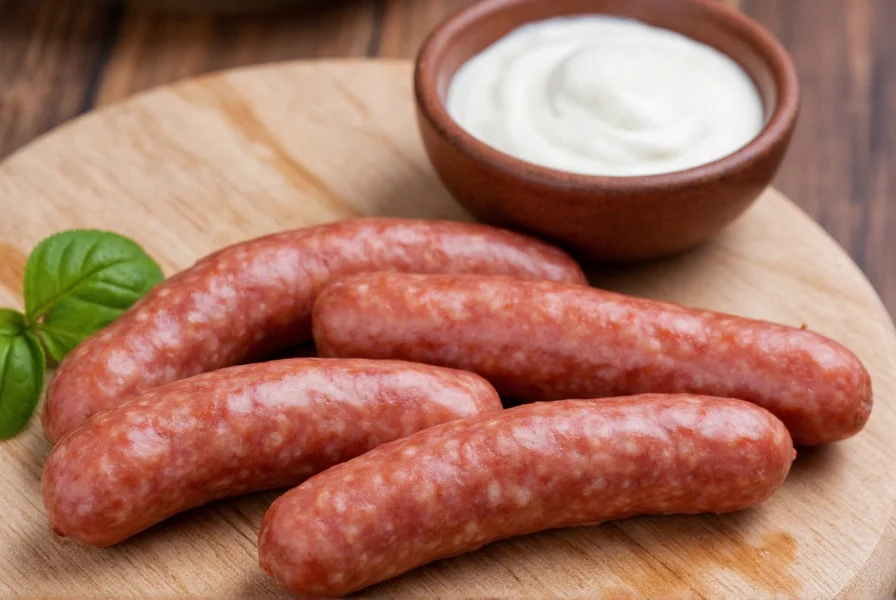Sweet Italian Sausage: A Flavorful Journey Through Its Key Ingredients
When it comes to iconic meats that scream flavor and tradition, sweet Italian sausage is a standout. Whether you're firing up the grill, making a hearty pasta dish, or whipping up a breakfast skillet, this sausage brings a perfect balance of savory, aromatic, and slightly sweet notes to your plate.
Table of Contents
- Introduction to Sweet Italian Sausage
- The Core Ingredients Behind the Magic
- Ingredient Breakdown & Their Roles
- Homemade vs. Store-Bought: What's the Difference?
- Buying Guide: Choosing the Best Sweet Italian Sausage
- Pro Tips for Using Sweet Italian Sausage in Your Kitchen
- Conclusion
Introduction to Sweet Italian Sausage

If you’ve ever taken a bite of sweet Italian sausage, you know there’s something deeply satisfying about its flavor profile. It’s not spicy like its hot cousin but carries a subtle sweetness with bold herbaceous notes. This kind of sausage has become a staple across American kitchens and backyard grills, yet its roots are firmly planted in Italian culinary tradition.
The magic lies not just in the meat itself, but in the carefully balanced mix of spices and seasonings that give it life. Let’s take a deep dive into what goes into crafting this beloved sausage—and how each ingredient plays a role in creating its signature taste.
The Core Ingredients Behind the Magic
At its heart, sweet Italian sausage is a simple blend of ingredients—but simplicity doesn’t mean lack of sophistication. Here's what typically goes into a classic recipe:
- Pork (usually shoulder cut)
- Fennel seed
- Garlic
- Black pepper
- Salt
- Sugar (or sweet paprika for mild sweetness)
- Dried herbs like oregano or thyme
- Natural casings

Let’s unpack each of these elements and explore their individual contributions to the sausage’s final character.
Ingredient Breakdown & Their Roles
1. Pork Shoulder – The Foundation

Sweet Italian sausage starts with pork—specifically the shoulder cut. This part of the pig contains a perfect balance of fat and muscle, giving the sausage a juicy texture and rich flavor. The typical fat content ranges between 20–30%, which helps carry flavors and prevents the sausage from drying out during cooking.
Why pork shoulder? It provides marbling that enhances mouthfeel without being overly fatty. If you want a leaner version, consider trimming some fat—but keep in mind, the fat is where the flavor lives!
2. Fennel Seed – The Star Spice

There’s no substitute for fennel seed when it comes to authentic sweet Italian sausage. It gives that unmistakable licorice-like aroma and earthy sweetness. Crushed lightly before mixing, fennel releases its oils, infusing the meat thoroughly.
Pro Tip: For a more robust flavor, toast the seeds slightly in a dry pan before grinding them. But don’t overdo it—you still want that delicate anise note, not bitterness.
3. Garlic – Bold & Aromatic

No Italian dish would be complete without garlic, and sweet sausage is no exception. Freshly minced garlic adds a pungent depth and warmth to the mix. Some recipes use garlic powder for convenience, but fresh garlic offers a more vibrant kick.
4. Black Pepper – Subtle Heat

Not too spicy, just enough to add a background zing—black pepper balances the richness of the pork and amplifies the other spices. Use freshly ground for best results.
5. Salt – The Essential Binder

Salt does more than just enhance flavor—it helps bind the ingredients together and extract proteins, giving the sausage that firm snap when bitten into. Typically, about 1.5–2% salt by weight is used in most sausage recipes.
6. Sugar – The ‘Sweet’ Factor

You may be surprised to learn that many versions of sweet Italian sausage contain a touch of sugar—often brown sugar or even maple syrup in modern adaptations. This softens the overall flavor and contributes to browning during cooking.
7. Dried Herbs – Earthy Complexity

Oregano, thyme, and sometimes marjoram or basil are often added for extra dimension. These herbs lend a rustic, sun-drenched quality that evokes Italian countryside kitchens.
8. Natural Casings – Authentic Texture

Traditionally made with natural hog intestines, casings give the sausage its classic look and satisfying pop when you bite into it. Artificial casings exist, but they lack the chew and authenticity of natural ones.
Homemade vs. Store-Bought: What's the Difference?
| Feature | Homemade Sausage | Store-Bought Sausage |
|---|---|---|
| Flavor Control | Full control over seasoning and ingredients | Limited customization |
| Freshness | Fresher if made recently | Variability depending on shelf life |
| Ingredients Quality | Use high-quality meat and spices | Might contain fillers or preservatives |
| Effort Required | More time and preparation needed | Convenient and ready to cook |
| Cost | Can be cheaper per pound | Higher price due to packaging and brand markups |

If you’re feeling adventurous, making your own sausage can be a rewarding experience. You get to tailor the flavor exactly to your liking, choose the meat quality, and skip any unwanted additives. However, for quick weeknight meals, store-bought options are perfectly acceptable—as long as you read the labels carefully.
Buying Guide: Choosing the Best Sweet Italian Sausage
Whether you’re buying pre-made sausage or picking ingredients to make your own, knowing what to look for makes all the difference. Here’s a breakdown of key factors to consider:
For Pre-Made Sausages
- Check the Ingredient List: Look for real pork (not “mechanically separated”), minimal additives, and natural casings.
- Avoid Fillers: Skip sausages containing corn syrup, soy protein, or artificial preservatives unless necessary for dietary needs.
- Brand Spotlight: Brands like Johnsonville, Budwiser, and Columbus Craft Meats offer excellent frozen and fresh options.
- Fat Content: Higher fat means juicier sausage. Aim for around 20–25% fat unless you’re watching calories.
- Seasoning Balance: Taste a sample if possible—fennel should shine through without overpowering other flavors.
For DIY Enthusiasts
- Meat: Buy fresh pork shoulder from a reputable butcher or grocery store. Organic or heritage breed options are ideal for deeper flavor.
- Spices: Go for whole fennel seeds and grind them yourself. Fresh garlic and quality herbs elevate the end result significantly.
- Casings: Purchase natural hog casings online or from specialty stores. They require rinsing and soaking, but the texture is worth it.
- Equipment: Invest in a meat grinder and stuffer if you plan to make sausage regularly.

Pro Tips for Using Sweet Italian Sausage in Your Kitchen
Sweet Italian sausage is incredibly versatile. Here are some creative ways to put it to delicious use:
1. Grilled Sausage & Peppers
Toss sliced bell peppers and onions in olive oil and grill alongside the sausage. Serve on a warm hoagie roll for an instant street food vibe.
2. Pasta Perfection
Cook crumbled sausage in a skillet, then toss with marinara sauce, garlic, and spaghetti. Top with Parmesan and fresh basil for a hearty meal.
3. Breakfast Hash
Cut cooked sausage into cubes and combine with diced potatoes, onions, and peppers. Season with smoked paprika and serve with poached eggs.
4. Stuffed Vegetables
Use seasoned sausage meat as a filling for bell peppers, zucchini boats, or mushrooms. Bake until golden and bubbly.
5. Pizza Powerhouse
Top your pizza dough with mozzarella, crumbled sweet sausage, red onion slices, and a drizzle of honey for a sweet-and-savory combo.

Conclusion
Sweet Italian sausage is more than just a meat product—it’s a celebration of flavor, heritage, and craftsmanship. From the tender pork shoulder to the fragrant fennel and garlic, each ingredient plays a vital role in shaping its identity.
Whether you buy it ready-made or try your hand at sausage-making, understanding the ingredients behind sweet Italian sausage empowers you to appreciate its complexity and elevate your cooking game. So fire up that grill, stock your pantry with spices, and let your kitchen echo the warmth of Italy one link at a time.











 浙公网安备
33010002000092号
浙公网安备
33010002000092号 浙B2-20120091-4
浙B2-20120091-4